In this article, I am going to tell you more about why algae are formed in hydroponics, especially in Rockwool and how you can solve this problem. We will also look at the advantages and disadvantages that algae bring to a hydroponic system.
The image that you see above is taken at my home garden. I have been trying to use all the things available to me for hydroponics. Here you can see the green floating thing, those are fresh algae. Once the algae are dead it turns blackish.
Disclosure: Some of the links below are affiliate links, meaning at no extra cost to you, I will earn a commission if you click through and make a purchase.
Why Algae develop in hydroponics?
Algae is a natural microorganism that grows anywhere where there are light, water, and nutrients for it to live on. Hydroponic systems are full of water and nutrients all the time. So, it creates a natural habitat for algae and a very healthy one too.
Algae is more commonly seen in aquaponics systems. In hydroponics, algae do not develop so easily or frequently. But when it does it causes some damage to the growth of your hydroponic crops. So, it is a matter of concern.
Algae can grow because of the direct sunlight that you are giving to your hydroponic system. The tubings of an NFT system can produce algae as they are always running with water and nutrients and are open to natural light.
As hydroponic systems are really compact, algae don’t get much room to grow but if you don’t pay attention and the algae starts to decompose the problem will grow exponentially.
These little slumpy creatures can slide inside anything and everything, be it your air pumps or water pumps and net pots, clogging the roots. So, better to be alert than to be sorry later.
Also Read “5 Easy Methods to fix Root Rot in Hydroponics“
Where Algae develops in Hydroponic systems?
No matter how much sterile and neural content you have used to start your hydroponic seeds and then transplant them into a completely brand new hydroponic system. Algae can creep in very easily even if you are growing hydroponic in a grow tent.
Mostly it is seen that algae growth starts inside the reservoir containing the hydroponic nutrient solution. This is very obvious because of the stagnant water content inside the tub, the algae get a good place to grow safely. Plus they can easily consume the nutrients that we put into our hydroponics.
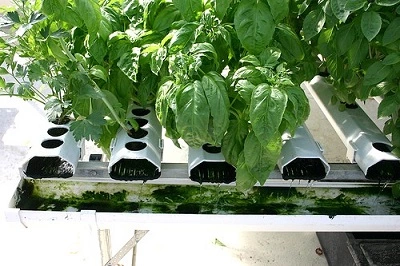
Reservoirs attract algae because of the nutrients and water and also if the reservoir has a transparent or a semi-transparent kind of material used, the sunlight can pass through it and algae grow without any problem.
The second most favourite place for algae to grow is within the growing medium. Many people face the issue of algae formation on Rockwool. As we know that Rockwool soaks a good amount of water that makes it high in moisture content and if sunlight also falls on Rockwool, algae formation happens. We will talk about how to get rid of algae on Rockwool later in this article.
Apart from these two, algae can be formed anywhere in between the tubes or water inlet or outlet pipes. Let’s check how we can clean the algae once it has formed.
Problems Algae creates in Hydroponics
Now that we know why and where algae can grow in a hydroponic system, you must be thinking, okay so now what? Why can’t I just let the algae grow and just focus on harvesting my crops and cleaning them later?
Here is the cache. Algae can also hamper the growth of your crops and in some instances, it can ruin the harvest as well.
Let’s check the two main threats that algae possess to your hydroponic plants.
Want LED Grow light for your Indoor Hydroponic System? Check this out “8 Best LED Grow Light for Indoor Plants“
1- Reduction in Dissolved Oxygen
If you have read anything about hydroponics then I am sure you know how important dissolved oxygen is for the roots. I am also sure that you know very well how important the roots are for the plants. Right?
Now, to understand why dissolved oxygen is reduced in the hydroponic system, we have to look at how algae functions.
So, algae being a micro-organism that lives in water generates energy by breaking down the water molecules and releasing CO2 in the process. But they have a limit. They can only create their own oxygen in the presence of sunlight.
Now, when the sunsets, algae has no choice but to use the oxygen dissolved in the nutrient solution. This creates a cycle of increasing and decreasing the availability of dissolved oxygen, something like a sine graph (if you know you know). The roots may get devoid of oxygen when in need and this slows down the organic growth of your hydroponic plant.
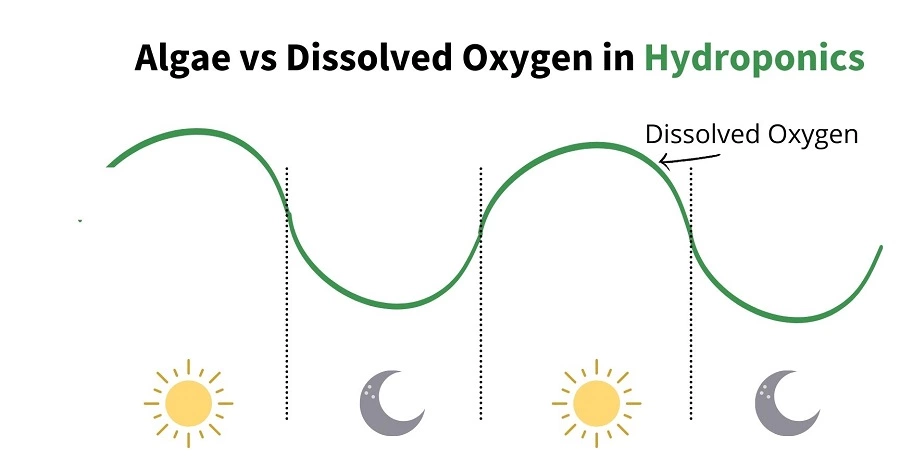
2- Decomposition of Dead Algae
Algal decomposition is not an issue when it comes to open field hydroponics, for example, the raft system. But in a closed space the algal decomposition can be dangerous.
Dead Algae starts to accumulate on the bottom of the nutrient tank and starts to decompose. The process of decomposition takes a high amount of dissolved oxygen from the nutrient reservoir.
This affects all the living organisms inside that nutrient solution be it the plant roots, bacteria, or any other thing.
HH Tip – You can add a small amount of humic acid to the nutrient container. This will eat up all the algae. Please note that this trick won’t work in shallow containers. The reservoir should be at least filled up to 9-12 inches.
3- pH Fluctuations
Another very interesting thing that happens with algae formation is that your pH level fluctuates.
You may have a perfectly well-calibrated pH tester and you are testing pH on the morning of each day. You see your readings are consistent. But if your hydroponic system is infected with algal decomposition what you will find is that the pH level is decreasing in the evening.
This is due to the fluctuation in dissolved oxygen. The pH levels of your solution increase in the daytime and decrease in the nighttime.
Also, Read “The Only pH management guide you’ll ever need“
How to get rid of Hydroponic Algae?
Covering with Dark material
This is a very common solution and many people suggest this in the hydroponic communities that I have been part of. But they tell me how to do that or what material to use and till how much time do I need to do this shading thing?
So, let me tell you, the purpose of shading is to cut down the natural sunlight that the algae are thriving upon. For this, you need to cover your reservoir or the hydroponic nutrient solution container with something opaque.
If you are using a glass jar for example and growing basil with the Kratky method and suddenly algae start popping up inside the glass jar, you can use aluminium foil to cover the jar nicely. Aluminium foil is a great reflector of light. I would even recommend you to wrap the aluminium foil 2 or 3 times across the jar or tub to completely cut out sunlight.
Other materials that can be used are dark coloured polyethers, brown paper (multiple layers), a plastic cover made with dense plastic, or paint the reservoir black if you want and now you get the idea.

Once you have done this, it takes almost a week to notice a real difference in the hydroponic solution. You will notice that the surface algae has been cleared and lying down in the container. If the quantity is small then it will automatically decompose, but if the quantity of dead algae is huge then you should definitely remove it manually and fill fresh nutrient solution if possible.
Manual Cleaning
If shading doesn’t suit you then manual cleaning is the best method to remove algae. Manual cleaning is mostly required when the algae growth has exceeded normal levels and your plants are starting to show signs of demise.
With manual cleaning, you can get rid of the algae completely within a few hours. But this takes a lot of labour.
Manual cleaning has two steps, firstly draining all the existing nutrients and then washing off the system with some cleaning and sterilizing agent.
- Before draining be sure to switch off and unplug all the electronic equipment used with your hydroponic system.
- Most hydroponic systems are built such that the reservoir is on the bottom and the nutrient is fed into the system via pipelines entering from the top of the system. This design helps to drain the system very easily.
- You can just pull out the drain plug from the bottom and the whole system will drain within minutes. If you are using the Kratky method where your solution is inside a tub or something then you know how to drain that up.
- The second step is to wash the whole system thoroughly.
- It is recommended you use some kind of cleaning agent to wash.
- You can either use Hydrogen Peroxide 35 V/v concentration or Hydroguard. To make a 1-gallon solution you will be adding 3 mL.
- You can also use neutral bleach (unscented) having a 1:100 ratio. For 1 gallon you will have to add approx 4 mL.
- Once you have your cleaning solution ready, the process is very simple. You already know how to wash utensils right? This is just like that, the only difference is here you are washing PVC pipes and plastic pots.
- Clean every nook and corner of the hydroponic system with the cleaning agent. One step to keep in mind is that you need to flush the system with bleach or Hydrogen peroxide. This means that you should run the solution through the system at least three times in case of bleach.

After doing this, you just need to let it dry in the sunlight. If doing indoors then keep it in bright sunlight to prevent algae from growing again.
Also Read “Best 5 EC & pH meters for Hydroponics“
UV water filters
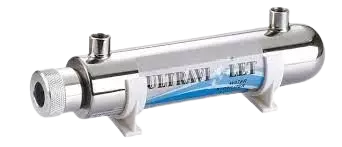
Ultraviolet filters are a nice way to automate the process of finding and killing all the microorganisms like any kind of bacteria, fungus or algae coming into your system. One drawback of UV filtration is that it is expensive. It costs much to install and to maintain.
Hence UV filters are mostly used by professional gardeners and greenhouse companies who maintain a large area of hydroponics and aquaponics farming.
The UV filters are added into the water filtration system of your system and as the used water comes for recycling, these filters cut out all the unnecessary living organisms.
Grapefruit Seed Extract
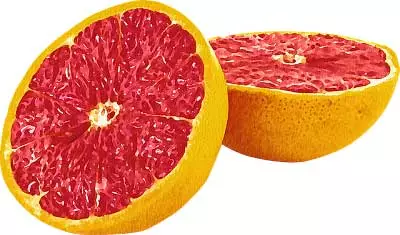
The grapefruit seed extract is also used to prevent algae from occurring in hydroponics. It has anti-parasitic and anti-bacterial properties which makes it a good contender to humic acid when it comes to eating algae.
As it is purely organic the grapefruit seed extract doesn’t do any side effects on your plant. Instead, it adds to the nutrition and helps increase yield.
You can use just 5-10 drops of this magic formula in a gallon of water and it will work for you.
Barley Straw
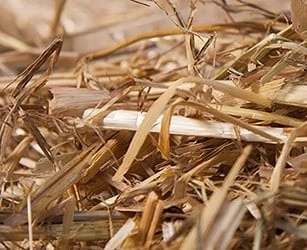
This one again is a completely organic solution to a completely natural problem. Barley straw has the property to release a chemical when in water. This is actually called aerobic decomposition. So, what this chemical does is that it loves algae and it eats them away. The result is a clean and clear algae free hydroponic system.
A word of caution before using barley straw is that, as this method is purely organic it works out slowly. Barley takes time to decompose. Also, it is recommended only for large systems like deep water raft systems where there is space and depth in water.
If used in a shallow or smaller system, the accumulation of dead algae and dead barley would create a deficiency of dissolved oxygen.
How to prevent Algae in Rockwool ?
Rockwool acts as moisture soaked sponge and hence attracts algae. They act as mulch. The algae start to grow on the edges and above the Rockwool cube, which you are using as grow media in your hydroponic system. The algae do not do much harm to the plants as it feeds on the extra nutrients and water but can cause harm at later stages.
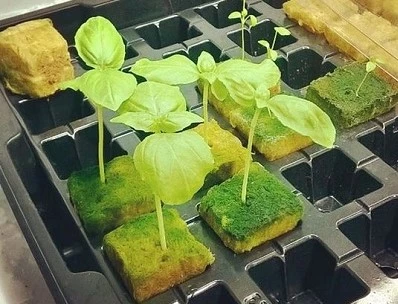
To remove algae from Rockwool you can use hydrogen peroxide treatment. The idea is to spray the hydrogen peroxide onto the Rockwool cube infected with algae every week. This would deter algae growth and provide some extra oxygen to the plant roots.
Advantages of Algae in Hydroponics
Although there is not much advantage of algae being formed in your hydroponic system there is one. The disadvantages are way more than this advantage and hence it is not a great deal to keep algae inside the hydroponic system.
When Algae is in the vegetative stage i.e green in colour, in that period the algae produce oxygen that is available for the plant roots to absorb easily. That means it increases dissolved oxygen.
Disadvantages of Algae in Hydroponics
After the vegetative stage, when the algae decompose it releases Nitrogen and Phosphorus into the solution. This encourages the growth of more algae in the system.
Algal decomposition also rapidly increases the number of bacterias in your hydroponic solution. This is because the algae are decomposed by the bacteria. These bacteria consume the dissolved oxygen creating it hard for the plant roots to get oxygen.
Some types of algae also release neurotoxins into the solution. These neurotoxins when dissolved with the solution are being supplied to plants via roots. Neurotoxins damage the metabolism of the plant, hampering the growth and in some cases stunted growth.
Quick Tips to Prevent Algae in Hydroponics
- Maintain the required pH level.
- Maintain ideal temperature and humidity. Around 20 to 25 degrees celsius for most hydroponics and average humidity of 50-60%.
- Try to not use transparent pipelines for water inlets or outlets.
- Use Hydrogen Peroxide for mild algae.
- Keep the nutrient solution away from direct sunlight.
Resources
- How to Manage Algae in Aquaponics and Hydroponics – Amy Storey
- Control of Algae in Hydroponic Systems – J Coosemans
- Research on Method of Inhibiting to The Growth of Green Algae in Hydroponics – Link

